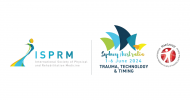Session outline
Physical activity (PA) is critically important for the prevention of physical and mental health issues, as well as upholding a high quality of life. However, there is extensive evidence that people with disabilities (PWDs) report significantly lower rates of PA than non-disabled individuals. PWDs face numerous barriers to community-based physical activity, many of which are not attributable to their condition. For instance, poor built environment and infrastructure, a lack of exercise equipment and resources which are adaptable to PWDs, and social barriers including ableism or fitness instructors with limited knowledge about disability and adaptable PA. For instance, one study found that 81% of study respondents who had a disability felt uncomfortable using a traditional gym space for PA due to the equipment available and what was considered an unwelcoming fitness culture (Trainers for hire et al., 2021). This calls for innovative solutions about community-engaged PA for PWDs that will take into account their needs and desire for PA. From the utilization of social media to facilitate adaptable PA to proposing PA programs that are co-designed by PWDs, this workshop will discuss possible solutions to improving access to, and the experience of, community-based PA for PWDs.
Learning outcomes
- Appreciate the importance of community-based PA for PWDs
- Understand the common barriers to PA in the community for PWDs
- Be able to provide PWDs with useful resources for community-based PA that take in account the barriers discussed above
Target audience
Understanding methods for community engagement and practical applications for improving community activity, including for those members of the community with disabilities, is important for everyone. With information like this, we can all return to our communities with a critical eye for improving engagement and access to movement.
- Allied health
- Medical practitioners
- Students
- Trainees
- Nursing staff
- General public



